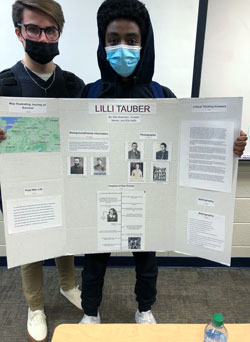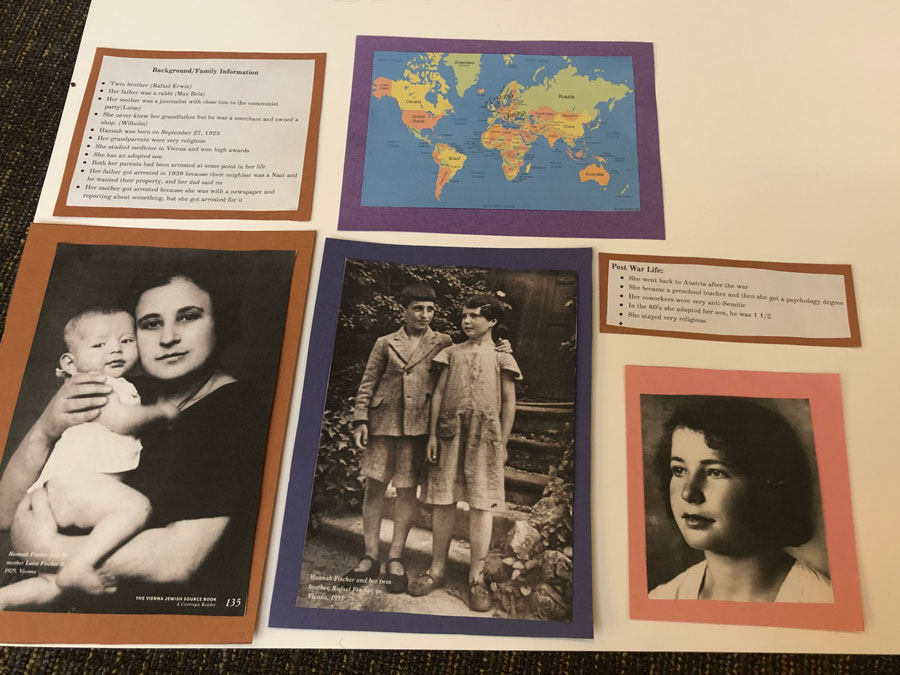Forest Hills— Solomon VanDam can’t imagine being suddenly and possibly permanently separated by thousands of miles from his family and friends. “I think I’d be so freaked out,” he admitted.
Classmate Anneke VanAst agreed. “Right now, I think, I’d be terrified to leave my family and my life here,” she said. “But we’re not in a world war. If we were, I might feel glad that there was an escape from it.”
Tens of thousands of European children and teens endured such a fate from 1938 to 1940, the Northern High School freshmen and their classmates recently learned.

World history teacher Faith Shotts-Flikkema led a new unit this year focused on the Kindertransport, a roughly nine-month effort that rescued and relocated from Germany to the United Kingdom some 10,000 mostly Jewish children under age 17, most of them before the start of World War II and the Holocaust.
Shotts-Flikkema led the unit in collaboration with two other teachers, one in Virginia and one in Greece. The Forest Hills students participated in a two-week, in-depth study via live video discussions with those other students.
They also communicated via email and postcards they sent via traditional mail. With no email or internet, of course, postcards were a primary method of communication used between children and the families they left during the Kindertransport, they learned.
Then groups of three or four students each focused on a single child and answered critical thinking questions such as whether the child survived and was reunited with their family, how he or she felt about their Jewish identities growing up and as adults, and what the students today would ask them if they could.
Presentations from each group included videos, posters and booklets that were to include timelines, maps, biographical information and photographs.
“They really did good work,” Shotts-Flikkema said. “Most of them said they want to know a lot more. Hopefully when we study the Holocaust in April we can go back to some of this, even for a day.”

Jumping Borders
The three teachers took a virtual “border-jumping” course on the subject last summer through Centropa, an international Jewish history education organization.
Shotts-Flikkema first heard about Kindertransport on a visit with students a couple years ago to the Holocaust Memorial Center in Farmington Hills, “so we’re learning right along with you,” she told students this year.
She pointed to a 2020 survey of U.S. millennials and Generation Z that found an overall lack of knowledge about the Holocaust.
“It’s so important that we teach these things,” she said. “It’s important because there’s so many lessons that connect what happened then to what happens today. Yes, Hitler was a bad person, but he could never have done what he did without help. And it’s also really important that students learn that it was almost all individuals who got involved to help those children (via Kindertransport), not government.”
What appealed to her about teaching the unit with teachers and students from other states and countries “was the idea that students could share experiences and ideas,” Shotts-Flikkema said. “Also, just to make the connection that we are all learning together, no matter where we are in the world.”
Students acknowledged technological glitches that sometimes made it difficult to collaborate online — Greece is seven hours ahead of Michigan, for example, so students there communicated from home near their bedtime.
Beyond that, Solomon said there were pros and cons to learning alongside peers in other states and countries. “The Virginia group were like 11th and 12th-graders who had studied (the Holocaust) for a while now, and the Greek group seemed to know a little less than us, so we were right in the middle.”
One intended goal the collaboration did reach was that it spurred students’ interest in learning more.
“One thing we heard about was that a lot of countries wouldn’t take (the children) in,” said Anneke. “I want to learn more about why they didn’t try to help.”

















